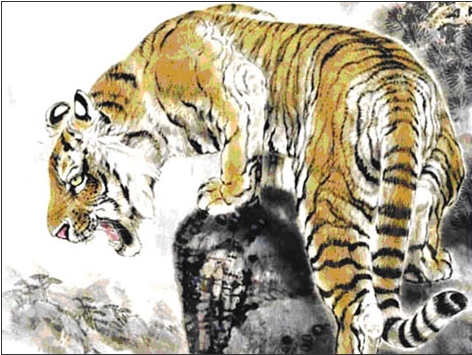
Eulogized as the "saint animal", "master of the mountain", "king of the animal", and "protective god of the mountain", the tiger has been adored and worshipped by Chinese since ancient times. With a history of over a million years, the tiger was born almost at the same time as the humankind, or even earlier. With China as its birth place, the "tiger culture" can be traced back to the primitive society about ten thousand years ago. At that time, people lived together with animals and made a living by hunting. They are both afraid and envious of the strong and mighty tiger, and thus worshipped it as the god and totem.
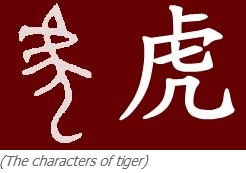
The character (hu, the tiger) in the oracle bone and the bronze scripts is either simplification and depiction of the head of a tiger or portrayal of the skin of a tiger. Meanwhile, the pronunciation of the character also simulated the roar of the tiger. As the most beautiful and strongest king of the animal in the world, the tiger is recognized as the god of the mountain, the ancestral god and also the protective god. Acknowledged as the ancestor of Chinese culture, it is characteristic of rich cultural implications. Along with the "dragon culture", the charismatic tiger represents the lively cultural disposition of Chinese nation, which is known as "flying tiger and leaping dragon".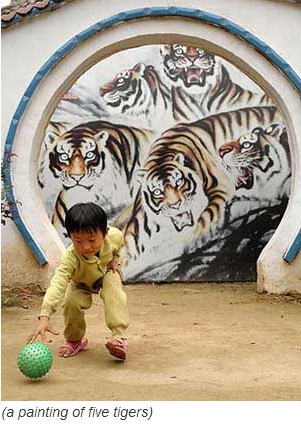
The tiger symbolizes upholding justice while exorcising the evil. People often intend to avoid misfortune by means of pillows, hats and shoes in the shape of the head of a tiger, as well as tiger paintings. For thousands of years, the tiger has been recognized in Chinese culture to symbolize force, auspice, and avoiding the evil. People usually hang a painting entitled "Five Blessings (Tigers)" in a place most obvious at home, hoping for security.

Vivid paintings of the tiger can be seen everywhere on the walls along the streets in Wanggongzhuang Village of Minquan County in Shangqiu City of Henan Province. Furthermore, inside the rural studios, paintings of mighty tigers can be found both on the walls and on the desks.
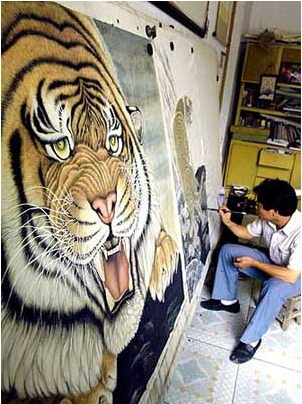
The brush work of traditional Chinese paintings is adopted in the tiger paintings produced by "No.1 Village of Tiger Paintings in China". The fine brushwork of the realistic painting presents every detail of a tiger, giving birth to lifelike works. The unique features of Chinese paintings are substantially demonstrated in these works. In addition to the tiger paintings, a series of other "tiger products" have also been developed in the village. For example, women in the village embroider hats, shoes, and pillows in the shape of the head of a tiger. Simple and cute, they are well received on the market.
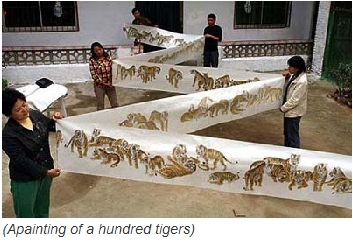
Owing to the arduous study for over two decades, Wanggongzhuang Village has fostered its unique brush work, known as "Minquan Tiger". With strong rustic characteristics, Wanggongzhuang paintings integrate strength and softness, flamboyance, simplicity and elegance, natural designs, coordinated patterns, and unique ways of drawing the hair. The vivid and graceful paintings of "Minquan Tiger" are very popular on the painting market.





